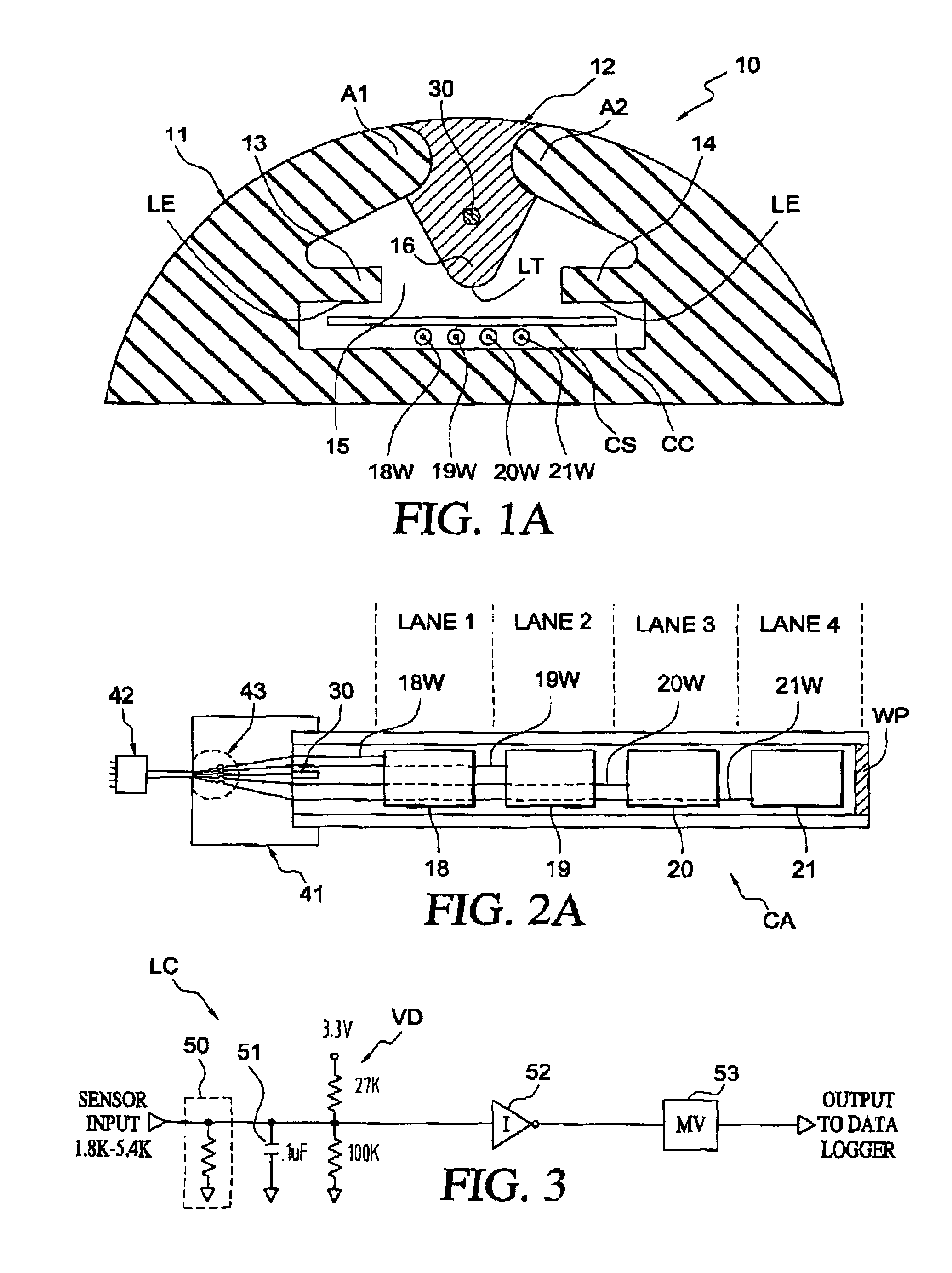Vehicle axle sensor
a technology of axle sensor and axle shaft, which is applied in the direction of cables, insulated conductors, ways, etc., can solve the problems of high manufacturing cost, poor performance, and inability to commercially succeed, and achieve the effect of reducing installation and retrieval time, high degree of flexibility, and easy disassembly
- Summary
- Abstract
- Description
- Claims
- Application Information
AI Technical Summary
Benefits of technology
Problems solved by technology
Method used
Image
Examples
Embodiment Construction
[0015]Referring to FIG. 1A, a one-piece tubular silicone rubber coextrusion 10 comprising a non-conductive silicone rubber 11 and a conductive silicone rubber 12. Other suitable materials may be used to make the coextrusion. Both rubber materials have a hardness of 80 durometer on the Type A scale. The linear conductive silicone rubber section 12 is formulated by mixing carbon particles with the non-conductive silicone rubber to achieve the required resistive values and proper bonding characteristics during the vulcanizing process when these two different rubber compounds are mutually joined and fused together during the coextrusion manufacturing process to form a deformable, closed housing. The inwardly projecting insulating wings 13 and 14 define a gap 15 through which the conductive contact protrusion or plunger 16 projects upon deformation of the housing. The rubber wedge removal spring arms A1, A2 serve two important sensitivity functions: (1) significantly improve the response...
PUM
 Login to View More
Login to View More Abstract
Description
Claims
Application Information
 Login to View More
Login to View More - R&D
- Intellectual Property
- Life Sciences
- Materials
- Tech Scout
- Unparalleled Data Quality
- Higher Quality Content
- 60% Fewer Hallucinations
Browse by: Latest US Patents, China's latest patents, Technical Efficacy Thesaurus, Application Domain, Technology Topic, Popular Technical Reports.
© 2025 PatSnap. All rights reserved.Legal|Privacy policy|Modern Slavery Act Transparency Statement|Sitemap|About US| Contact US: help@patsnap.com



